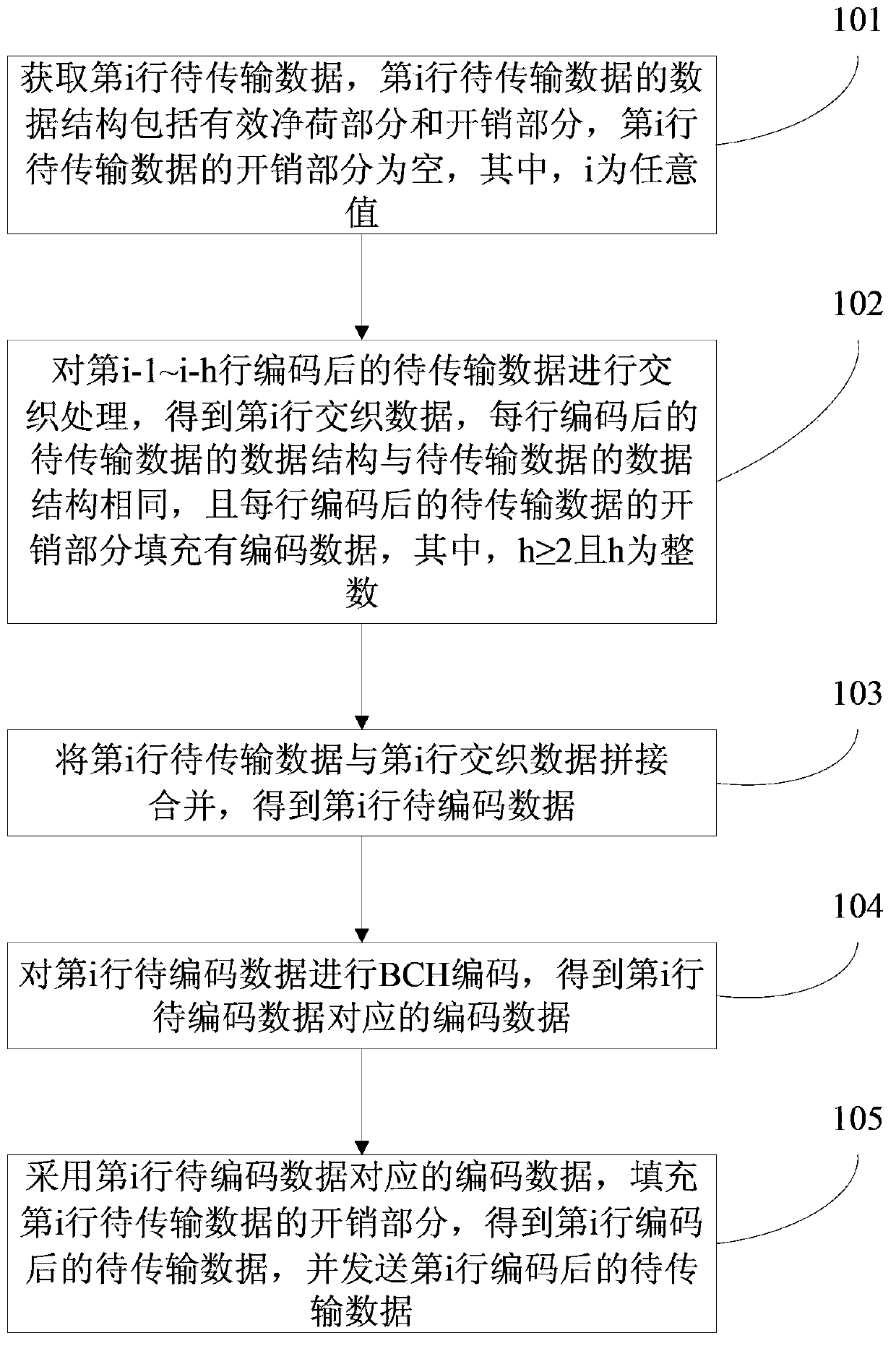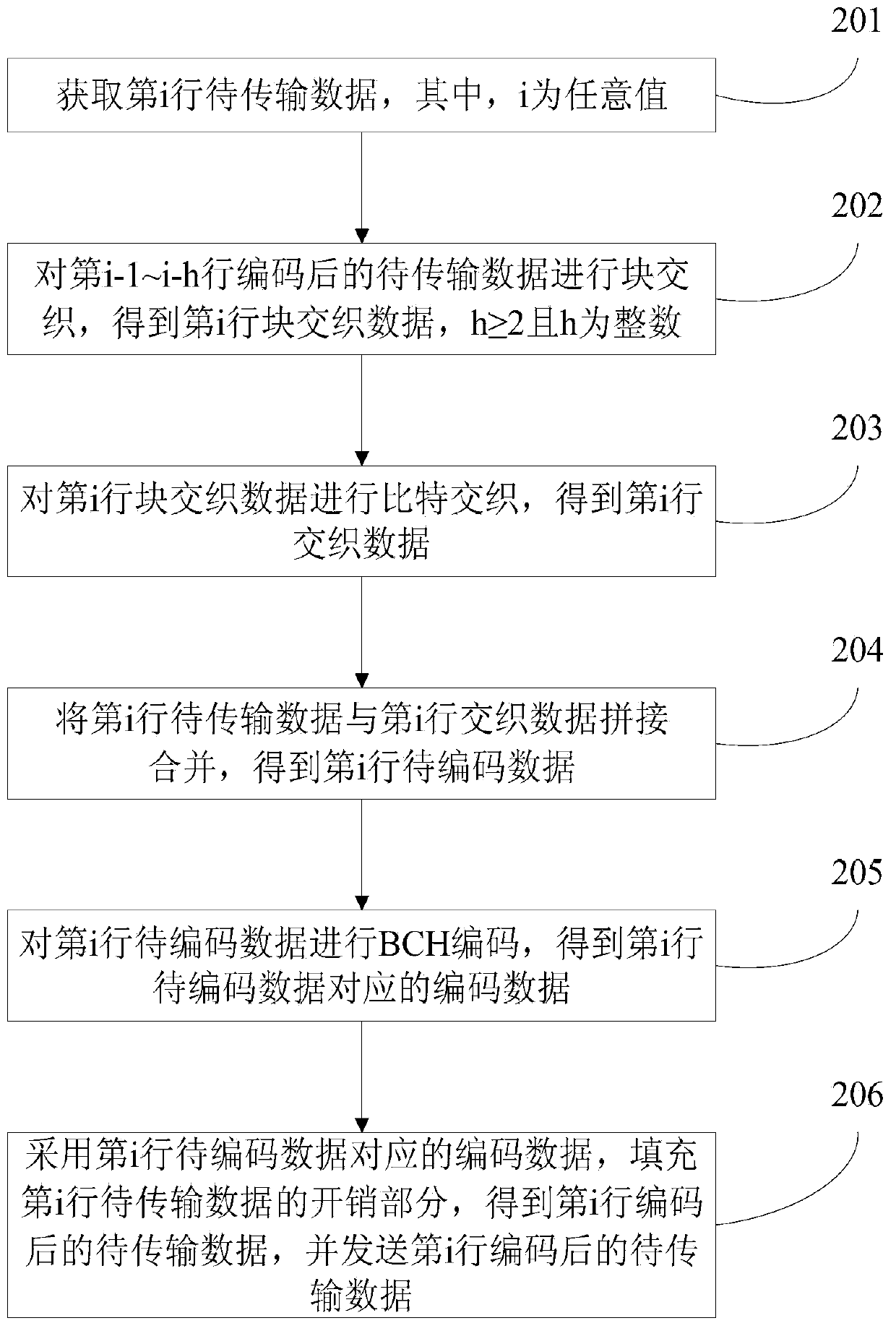Method and device for forward error correction encoding, method and device for forward error correction decoding, and communication device and system
A forward error correction coding and decoding technology, which is applied in the field of communication equipment and systems, forward error correction coding and decoding methods and devices, can solve data frame requirements and algorithms that have limited error correction capability and cannot meet high-speed transmission. complex issues
- Summary
- Abstract
- Description
- Claims
- Application Information
AI Technical Summary
Problems solved by technology
Method used
Image
Examples
Embodiment 1
[0146] Embodiment 1 of the present invention provides a forward error correction coding method, see figure 1 , the method includes:
[0147] Step 101: Obtain the i-th row of data to be transmitted. The data structure of the i-th row of data to be transmitted includes a payload part and an overhead part. The overhead part of the i-th row of data to be transmitted is empty, where i is any value.
[0148] Among the data to be transmitted, the effective payload part is filled with unencoded original data, and the overhead part is used for filling encoded data.
[0149] In addition, it is easy to know that i is a positive integer.
[0150] Step 102: Perform interleaving processing on the data to be transmitted encoded in rows i-1~i-h to obtain the interleaved data in row i, the data structure of the encoded data in each row is the same as the data structure of the data to be transmitted, and each The overhead part of the row-coded data to be transmitted is filled with coded data,...
Embodiment 2
[0159] Embodiment 2 of the present invention provides a forward error correction coding method, see figure 2 , the method includes:
[0160] Step 201: Obtain the i-th row of data to be transmitted, where i is any value.
[0161] Specifically, the data structure of the data to be transmitted is as follows image 3 As shown, it includes a payload part and an overhead part, and the overhead part of the data to be transmitted is empty. What is filled in the effective payload part is original data that has not been encoded, and the overhead part is used to fill encoded data.
[0162] Usually, the data to be transmitted is transmitted in units of frames, one frame includes multiple rows of data, and the number of rows of data included in each frame is determined by the frame structure. For example, for an OTU2 frame, each frame includes 4 rows of data.
[0163] Step 202: Perform block interleaving on the coded data to be transmitted in row i-1~i-h to obtain block interleaved da...
Embodiment 3
[0219] Embodiment 3 of the present invention provides a forward error correction decoding method, which corresponds to the forward error correction encoding method provided in Embodiment 1. Refer to Figure 7 , the method includes:
[0220] Step 301: Receive the i-th line of transmission data, the data structure of the i-th line of transmission data includes a payload part and an overhead part, and the overhead part of the i-th line of transmission data is filled with encoded data, where i is any value.
[0221] Specifically, the data structure of the transmission data is the same as the data structure of the data to be transmitted in Embodiment 1, and will not be described in detail here.
[0222] Step 302: Perform interleaving processing on the i-1~i-h row of transmission data to obtain the i-th row of interleaved data, where h≥2 and h is an integer.
[0223] Step 303: Splicing and merging the i-th row of transmission data and the i-th row of interleaved data to obtain the ...
PUM
 Login to View More
Login to View More Abstract
Description
Claims
Application Information
 Login to View More
Login to View More - R&D
- Intellectual Property
- Life Sciences
- Materials
- Tech Scout
- Unparalleled Data Quality
- Higher Quality Content
- 60% Fewer Hallucinations
Browse by: Latest US Patents, China's latest patents, Technical Efficacy Thesaurus, Application Domain, Technology Topic, Popular Technical Reports.
© 2025 PatSnap. All rights reserved.Legal|Privacy policy|Modern Slavery Act Transparency Statement|Sitemap|About US| Contact US: help@patsnap.com



